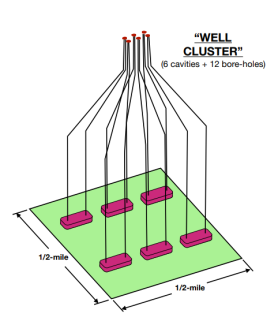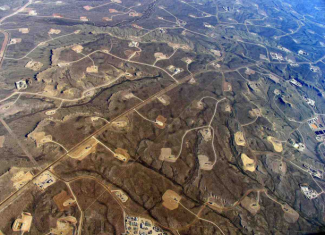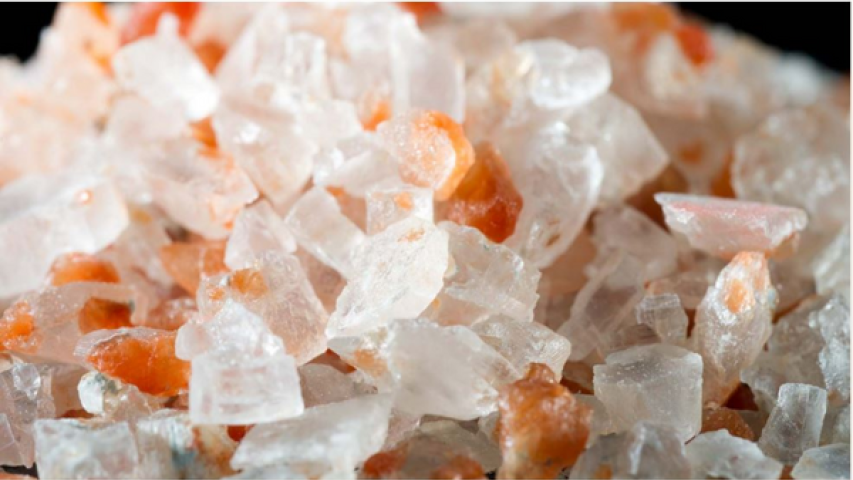
POTASH MINING
Solution-mining involves creating below-ground cavities within the ore-body, in this case a thin vein of potash ore. Past operations have demonstrated that cavities created in this ore-body remain productive for only 2-3 years. (1) PPG/Kalium/Mosaic spaced their mining cavities to ensure against surface subsidence by limiting total cavity area to no more than 30% of the overlying land surface. To accomplish this, they reserved 160 acres for each cluster of 6 cavities, allowing them to locate 4 such clusters beneath each section (square-mile) of land.
QUESTION:
ASSUMING THAT MPSC FOLLOWS THIS INDUSTRY STANDARD IN SPACING THEIR OWN WELLS, HOW MUCH AREA WILL BE CONSUMED BY THE COMPANY’S OPERATIONS?
ANSWER:
Given an average cavity life of 2 ½ years and recognizing that not all cavities operate at maximum efficiency, we believe that MPSC will need to expand its mining area by at least 1,000 acres every 2 ½ years. At this rate the company will have exhausted its entire 25 square-mile lease area in roughly 40 years.
Over the course of an anticipated 150-year lifetime, the company will have mined out nearly 100 square miles of land.
*** This is assuming that large numbers of landowners remain willing to sign mineral leases in the face of problems that others may have experienced (e.g.: depleted household wells and contaminated ground/surface waters from leaks and spills).
These cavities will be connected to a centralized refinery by a network of high volume pipelines operating under extreme pressure. Thousands of gallons per minute of toxic and highly corrosive brines will traverse some of the most sensitive terrain in Michigan. Private, non-leased land and numerous roads will be involved.
- How will the company maintain and monitor such an extensive network?
- Have they developed a spill emergency response plan?
IT DOES NOT APPEAR THAT THE EPA, EGLE, NOR LOCAL UNITS OF GOVERNMENT BEGIN TO GRASP THE RAMIFICATIONS OF WHAT IS BEING PROMOTED HERE.
NOTE: In our view, it’s highly unlikely that this operation will ever progress to this point. We seriously doubt that MPSC will get anywhere close to its “full-buildout” of one million tons of potash per year, given that over the course of 25 years, a succession of large, experienced, and deep-pocketed mining companies never exceeded 150,000 tons on a much better site nearby. Over the past ten years, MPSC has issued increasingly grandiose projections tied to absurdly unrealistic timelines. For more than five years the company has been declaring groundbreaking to be “imminent” and that they were in the “final stages” of financing.
While we view this as little more than an extended sales-pitch meant to attract investment capital and government grants, we very much fear the price to be paid if someone is foolish enough to actually attempt this mining operation. Even a relatively small first step, the operation of their four permitted cavities, would carry an unacceptably high risk of destroying Bullkill Marsh and Creek, along with an unknown expanse of shallow aquifers while rendering neighboring wells unusable.
…AND IS ANYBODY ASKING: DOES THE CREATION OF 180 JOBS JUSTIFY ALL OF THIS?
This a photo of a “fracking field” in Wyoming. While it no doubt bears little resemblance to what Michigan Potash will create, it illustrates how profoundly oil, gas, and mineral development alter the character of rural America. Whatever MPSC’s mine-field ends up looking like, it will not resemble what came before.
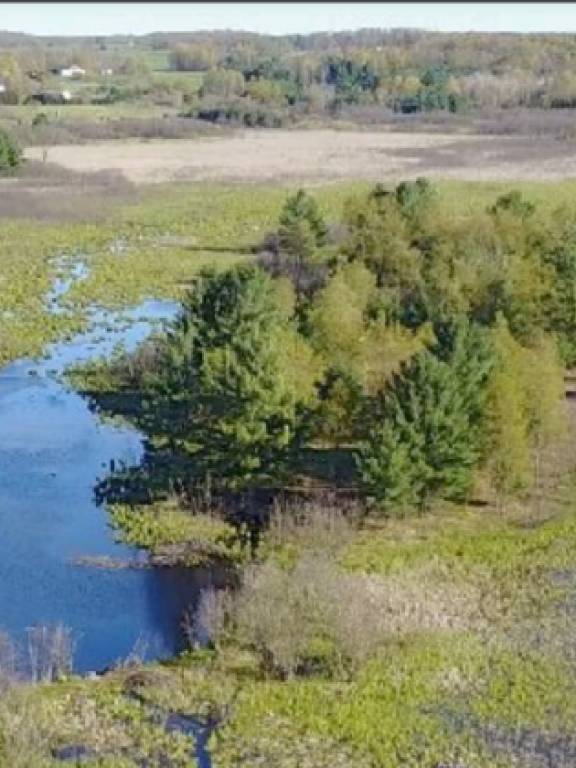
Potash Mining Home
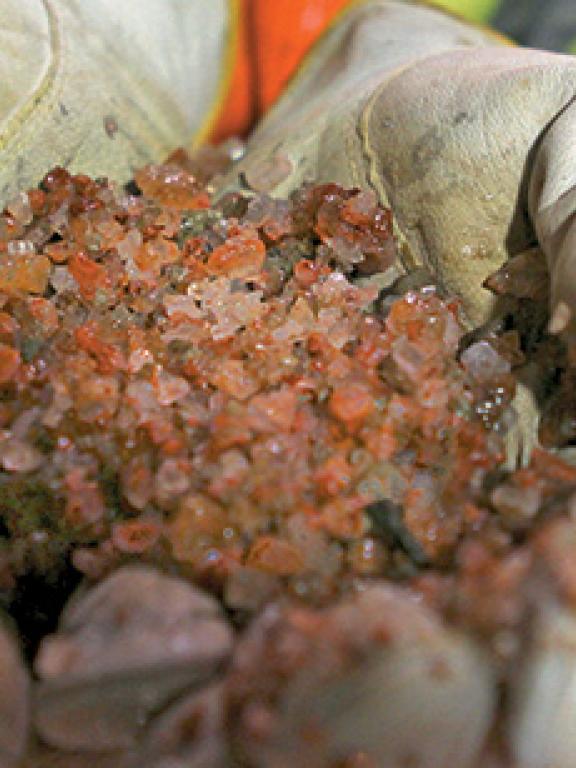
Solution-Mining Basics
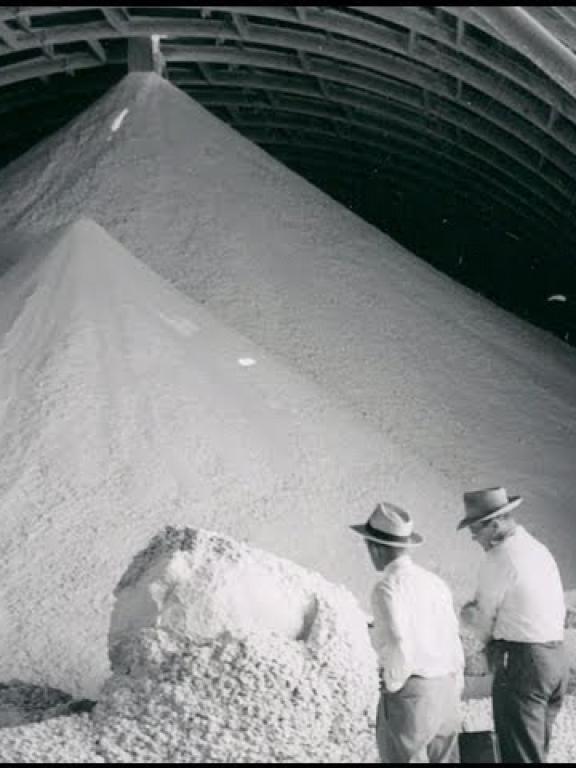
History of POTASH Mining

Economics

The "Ore" Body

Water Withdrawal

Well-spacing, Pipelines, & Sprawling

Terrain, Sites, & Brine

Gray Site


